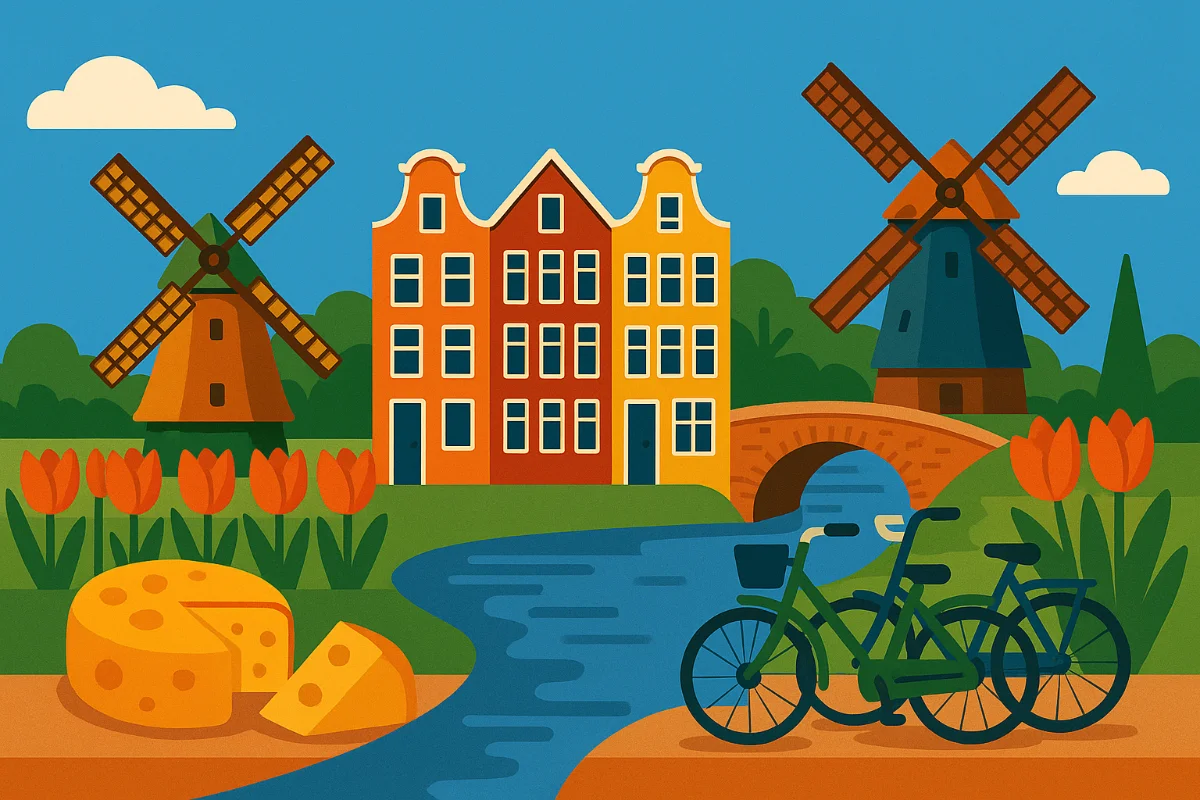Perfect Tense with 'hebben' (Voltooid Tegenwoordige Tijd - V.T.T.) (A2)
What it is: The perfect tense (V.T.T.) describes actions that were completed in the past but have a connection to the present. It's often translated to English using "have/has + past participle" (e.g., "I have worked"). It's very common in spoken Dutch.
Formation (with 'hebben'):
The structure is: Subject + Conjugated form of 'hebben' + ... (rest of sentence) ... + Past Participle
- 'Hebben' Conjugation (Present Tense):
- ik heb
- jij/u hebt
- hij/zij/het heeft
- wij/jullie/zij hebben
- Past Participle (Voltooid Deelwoord):
- Regular Verbs: Usually formed as
ge + stem + torge + stem + d. - Find the stem (infinitive minus
-en). - Apply the 't Kofschip rule to the last letter of the stem: If it's t, k, f, s, ch, or p, add -t. Otherwise, add -d.
- Example:
werken-> stemwerk(k is in 't kofschip) ->gewerkt - Example:
reizen-> stemreiz(z is not in 't kofschip, becomes s) ->gereisd - Note: If the stem already ends in
tord, you don't add an extratord(e.g.,praten->gepraat,landen->geland). - Verbs starting with inseparable prefixes (be-, ge-, er-, her-, ont-, ver-) do not get
ge-at the beginning of the participle (e.g.,betalen->betaald,vertellen->verteld). - Irregular Verbs: These have unique past participles that must be memorized. They often end in
-enand might have a vowel change. - Example:
zien->gezien - Example:
eten->gegeten - Example:
drinken->gedronken - Example:
doen->gedaan
When to use 'hebben': 'Hebben' is used as the auxiliary verb for:
- Most verbs, especially transitive verbs (verbs that take a direct object).
- Many intransitive verbs (verbs without a direct object).
- Reflexive verbs.
Examples:
- Regular:
Ik heb hard gewerkt.(I have worked hard.)Zij heeft Nederlands geleerd.(She has learned Dutch.) (leren -> leer -> geleerd)Wij hebben een pizza besteld.(We have ordered a pizza.) (bestellen -> bestel -> besteld)- Irregular:
Hij heeft een boek gelezen.(He has read a book.) (lezen -> gelezen)Jij hebt koffie gedronken.(You have drunk coffee.) (drinken -> gedronken)Wat hebben jullie gedaan?(What have you done?) (doen -> gedaan)Ze hebben de film gezien.(They have seen the film.) (zien -> gezien)
Key Points:
- The perfect tense connects a past action to the present.
- The structure is
hebben/zijn + ... + past participle. Hebbenis the most common auxiliary verb.- Remember the 't Kofschip rule for regular past participles.
- Memorize irregular past participles.
- The past participle usually goes at the end of the clause.

